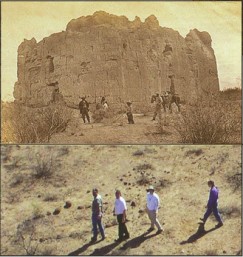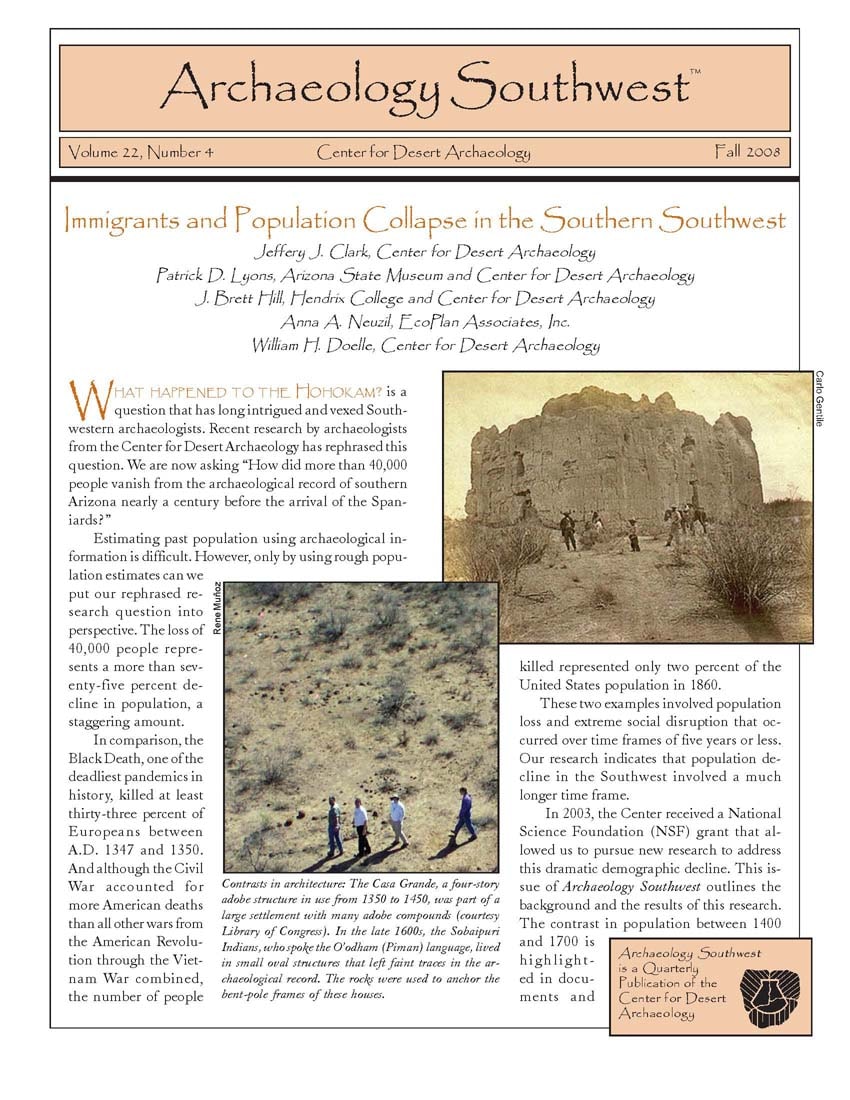Immigrants and Population Collapse in the Southern Southwest

Contrasts in architecture: The Casa Grande, a four-story adobe structure in use from 1350 to 1450, was part of a large settlement with many adobe compounds (courtesy Library of Congress). In the late 1600s, the Sobaipuri Indians, who spoke the O’odham (Piman) language, lived in small oval structures that left faint traces in the archaeological record. The rocks were used to anchor the bent-pole frames of these houses.
Archaeology Southwest Magazine Vol. 22, No. 4
Free PDF Download
Jeffery J. Clark, Archaeology Southwest (formerly the Center for Desert Archaeology); Patrick D. Lyons, Arizona State Museum and Archaeology Southwest; J. Brett Hill, Hendrix College and the Center for Desert Archaeology; Anna A. Neuzil, EcoPlan Associates, Inc.; and William H. Doelle, the Center for Desert Archaeology
What happened to the Hohokam? This issue of Archaeology Southwest Magazine explores initial results of Archaeology Southwest’s (formerly the Center for Desert Archaeology) long-term research on the dramatic population decline that occurred in the southern Southwest almost a century before the arrival of the Spaniards. Contributors discuss the impact of migration on demographic change, as well as the methodologies they employ to address this complex research problem. Patterns are described for each of five study areas: the lower Salt River Valley, Perry Mesa, the lower San Pedro Valley, the Tonto Basin, and the Safford Basin. The issue closes with a summary of preliminary conclusions and ongoing avenues of inquiry.
Articles include:
Immigrants and Population Collapse in the Southern Southwest
Overview of Migration
The Original Salado Migration Concept
Methods
The Lower Salt River Valley
Perry Mesa
The Lower San Pedro Valley
The Tonto Basin
The Safford Basin
Conclusions
Back Sight — William H. Doelle, President & CEO, Center for Desert Archaeology
Subscribe

